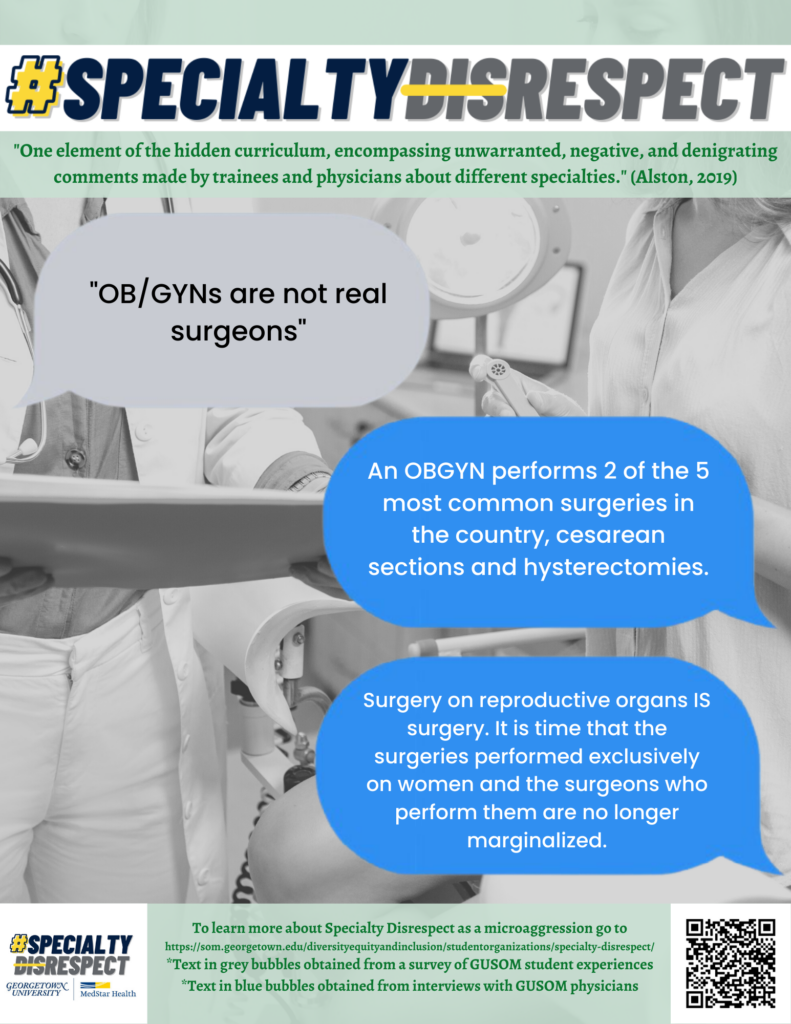OB/GYN

Fiction #1: OB/GYN do not perform real surgeries
Fact: Not only do OB/GYNs provide outpatient and inpatient medical care, but they are highly trained surgeons that perform major abdominopelvic surgeries of all kinds. A few examples of the procedures perform are hysterectomies, ovarian cyst removal, and pelvic laparoscopy. In fact, Cesarian sections are one of the most common major operating room procedures.1
Fiction #2: The job market is terrible
FACT: The U.S. Bureau of Labor Statistics reports that demand for the OB/GYN profession is expected to rise 16% from 2016 to 2026, which is an increase of about 3,400 new jobs.2 This is faster than the national average and slightly faster than for most other physicians and surgeons. By 2020, there will be up to 8,000 fewer OB-GYNs than needed, according to American College of Obstetricians and Gynecologists, and the number may rise to 22,000 by mid-century. The shortage hits rural areas the hardest, where a lack of OB/GYN’s can be the matter of life or death in emergency situations.3
Fiction #3: The only thing Ob/GYNs do is help pregnant women.
FACT: OB/GYNs have expertise over a multitude of topics and can help people of all different ages and stages of life. OB/GYNS can help give safe sex tips, advice on preventing or treating sexually transmitted infections or HIV, vaccination against the human papillomavirus, infertility treatments, advice on diets for pregnancy, treatment for easing cramps or other menstrual problems, and much more. In fact, in a 2017 survey, 20% of respondents considered their OB/GYN to be their primary care provider.4
Additionally, OB/GYNs can sub-specialize in many different fields, including maternal-fetal medicine, reproductive endocrinology and infertility, gynecologic oncology, and female pelvic medicine and reproductive surgery.
Sources
1. Pfuntner A, Wier LM, Stocks C. Most Frequent Procedures Performed in U.S. Hospitals, 2010: Statistical Brief #149. Rockville, MD: In: Healthcare Cost and Utilization Project (HCUP) Statistical Briefs [Internet]; 2013 Feb.
2. Dall TM, Chakrabarti R, Storm MV, Elwell EC, Rayburn WF. Estimated demand for women’s health services by 2020. J Womens Health (Larchmt). 2013;22(7):643-648. doi:10.1089/jwh.2012.4119
3. Marsa L. Labor pains: The OB-GYN shortage. AAMC. https://www.aamc.org/news-insights/labor-pains-ob-gyn-shortage. Published November 15, 2018.
4. Mazzoni S, Brewer S, Durfee J, et al. Patient Perspectives of Obstetrician-Gynecologists as Primary Care Providers. J Reprod Med. 2017;62(1-2):3-8.
Read the text version of this poster
[Background is in black and white and is a female physician and patient talking]
[Top header in light green. Text in dark green]
“Specialty Disrespect” in bold at the top. Underneath this title reads “Specialty Disrespect (SD) is an element of the hidden curriculum, encompassing unwarranted, negative, and denigrating comments made by trainees and physicians about different specialties. SD affects all specialties, touching most medical students by graduation (Alston, 2019).”
Poster that mimics an iphone messaging screen with fictional statements as receiving grey message bubbles and factual statements as sent blue message bubbles. This poster is about OB/GYN. The fictional side reads “”OB/GYNs are not real surgeons” and the factual response reads “An OB/GYN performs 2 of the 5 most common surgeries in the country, cesarean sections and hysterectomies.” and “Surgery on reproductive organs IS surgery. It is time that the surgeries performed exclusively on women and the surgeons who perform them are no longer marginalized.”
[Bottom header in light green. Text in dark green]
On the left is the dark blue Office of Diversity and Inclusion Logo. On the right is a QR code that links to this webpage (som.georgetown.edu/specialty-respect). In the middle is “To learn more about SD as a microaggression go to som.georgetown.edu/specialty-respect”
